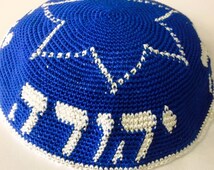
Other projects include Tim Plaisted’s ( / boxc/ / ), a parodic commercial site that disappears when users attempt to interact with it, and Ricardo Loría’s Rictronik ( ), an interactive abstract art site.

Over thirty artists from Latin America, Australia, India, Indonesia, the Philippines, Hong Kong, and the United States are included in the exhibition, which runs from March 23 through April 20, 2001. “ Interactiva” is organized by Los Angeles–based digital artist Raul Ferrera-Balanquet, who also recently took part in Alchemy, a new-media lab in Brisbane, Australia. It is also a collaboration between Mérida’s Museo de Arte Contemporanéo Ateneo de Yucatán ( and artist-run web design group ( The exhibition features projects ranging from CD-ROMs to online projects, video, installation, and performance.

According to Ferrera-Balanquet, “Interactiva” is a statement against the current economic imbalance in technological development. “Access to the Internet is a big issue in Mérida, a provincial city in southeast Mexico.” Exhibition artists had limited or no access to technology or to the technical expertise needed to produce interactive art. “But one doesn’t have to be a ‘guru programmer’ in order to make interactive art,” insists Ferrera-Balanquet.Digital art is art created on a computer in digital form.
KLIPPED KIPPAH COUPON CODE SOFTWARE
Digital art can be purely computer-generated, such as fractals, or taken from another source, such as a scanned photograph, or an image drawn using vector graphics software using a mouse or graphics tablet. The term is usually reserved for art that has been non- trivially modifed by a computing process (such as a computer program, microcontroller or any electronic system capable of interpreting an input to create an output) digitized text data and raw audio and video recordings are not usually considered digital art in themselves, but can be part of a larger project. The availability and popularity of photograph manipulation software has spawned a vast and creative library of highly modified images, many bearing little or no hint of the original image. Using electronic versions of brushes, filters and enlargers, these "Neographers" produce images unattainable through conventional photographic tools. In addition, digital artists may manipulate scanned drawings, paintings, collages or lithographs, as well as using any of the above-mentioned techniques in combination. Artists also use many other sources of information and programs to create their work.ģD graphics are created via the process of designing complex imagery from geometric shapes, polygons or NURBS curves to create realistic 3 dimensional shapes, objects and scenes for use in various media such as film, television, print and special visual effects. There are many software programs for doing this. The technology can enable collaboration, lending itself to sharing and augumenting by a creative effort similar to the open source movement, and the creative commons in which users can collaborate in a project to create unique pieces of art. The mainstream media uses a lot of digital art in advertisements, and computers are used extensively in film to produce special effects.


Desktop publishing has had a huge impact on the publishing world, although that is more related to graphic design. Nonetheless, digital art is yet to gain the acceptance and regard reserved for "serious" artforms such as sculpture, painting and drawing, perhaps due to the erroneous impression of many that "the computer does it for you" and the suggestion that the image created could be infinitly repeatable.Ĭomputers are also commonly used to make music, especially electronic music, since they present an easy and powerful way to arrange and create sound samples.


 0 kommentar(er)
0 kommentar(er)
